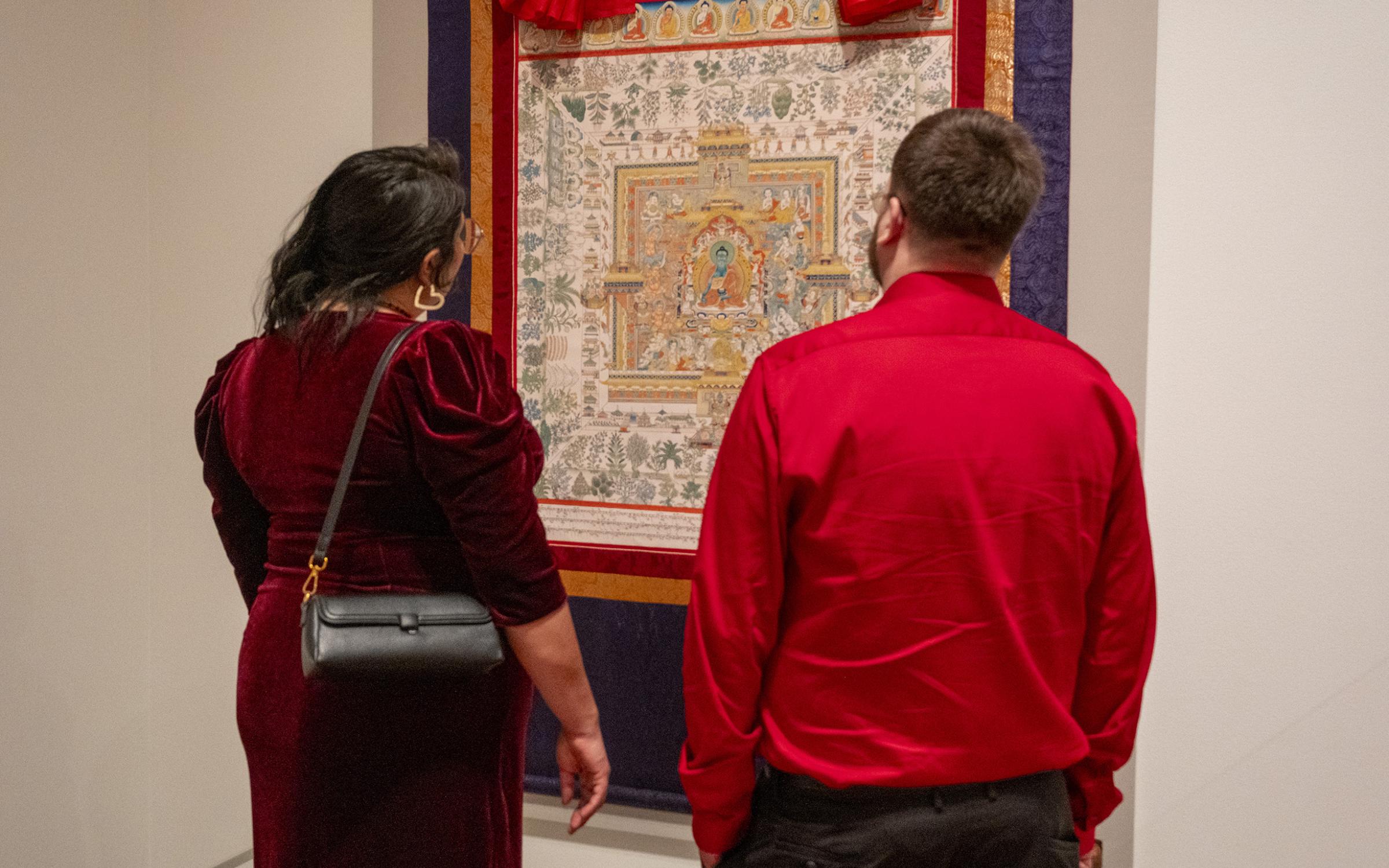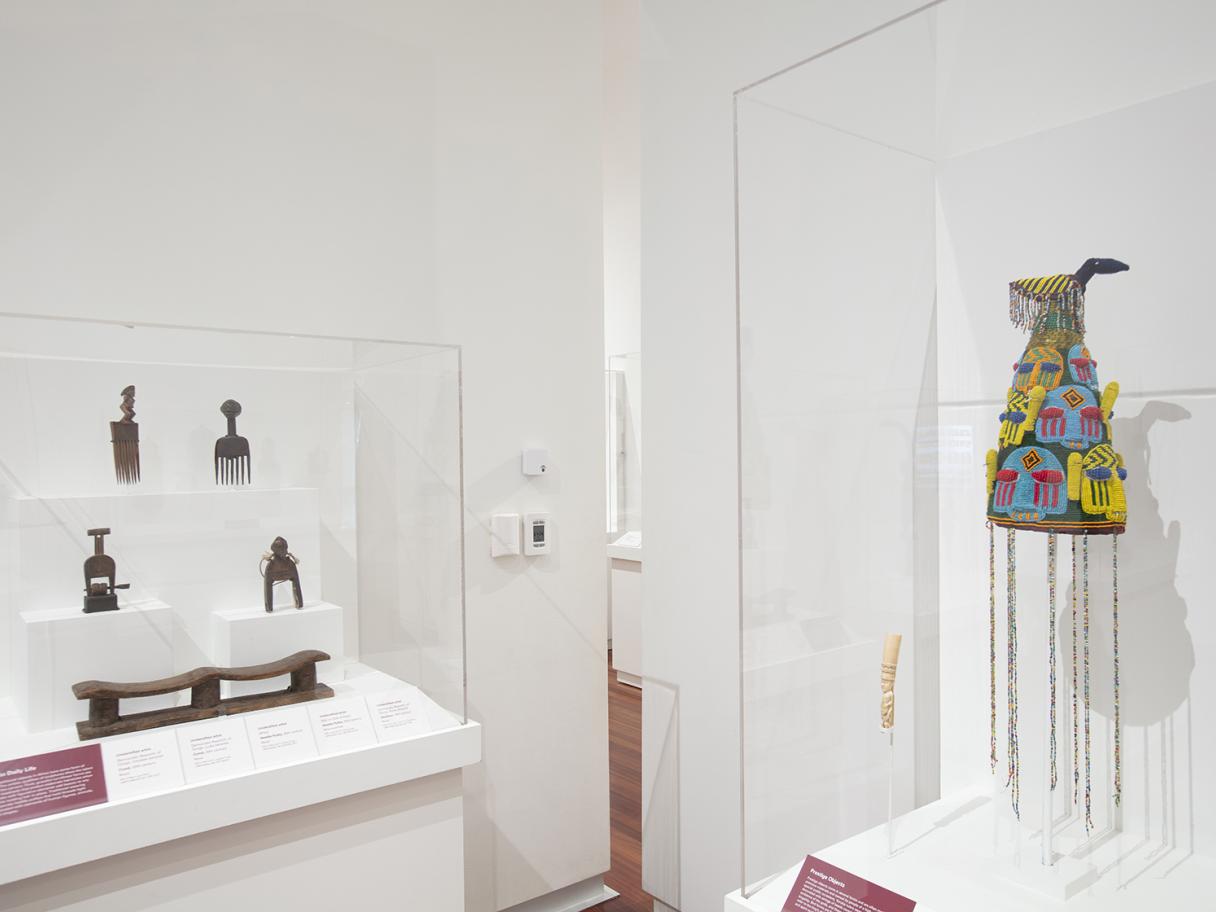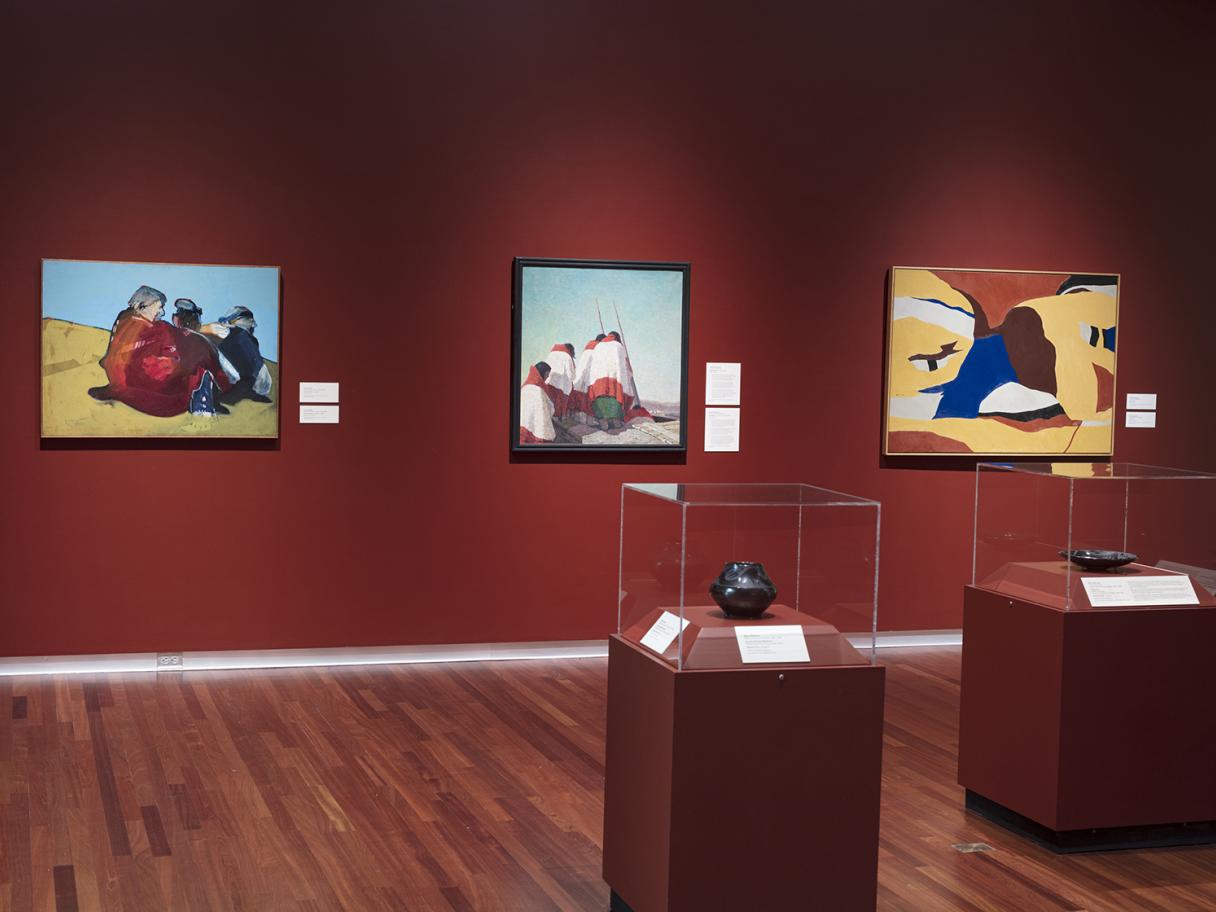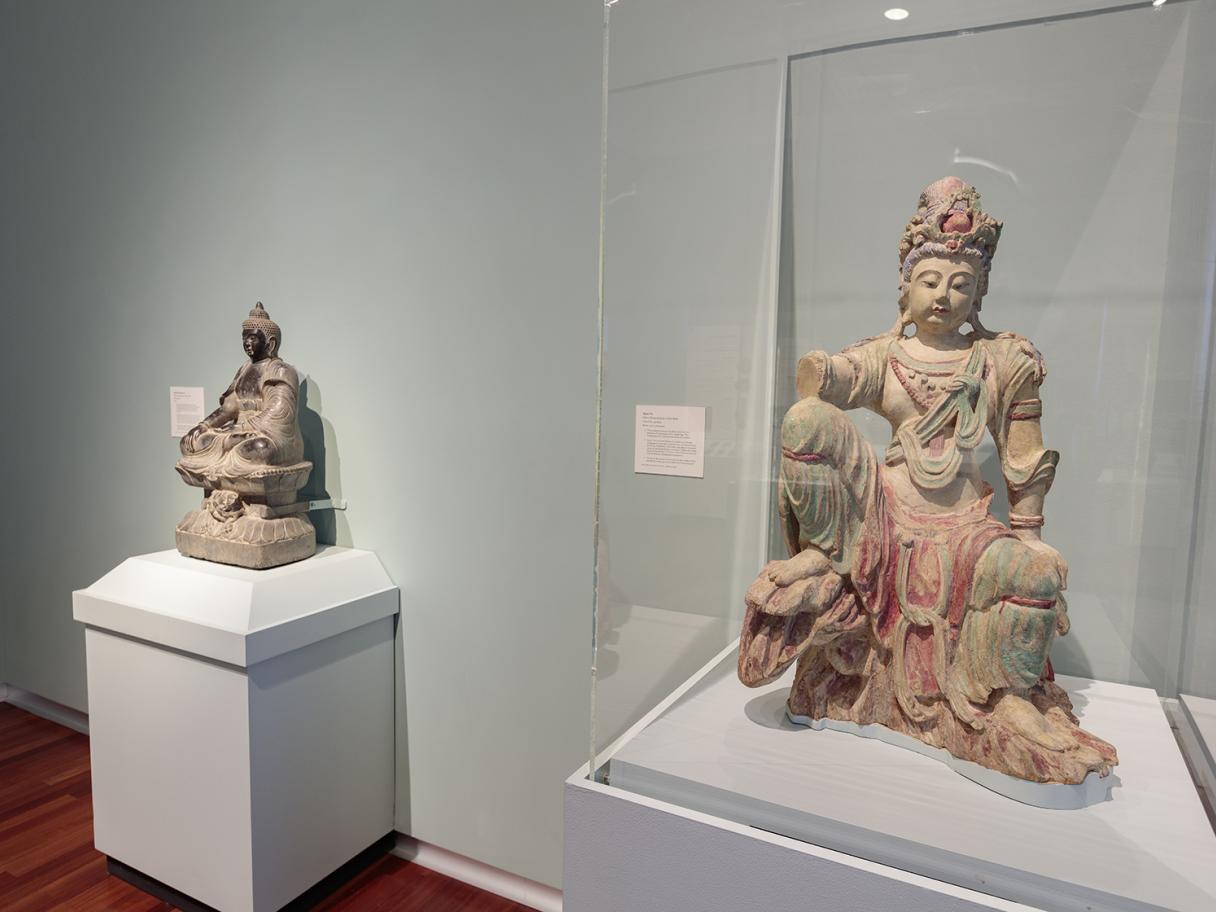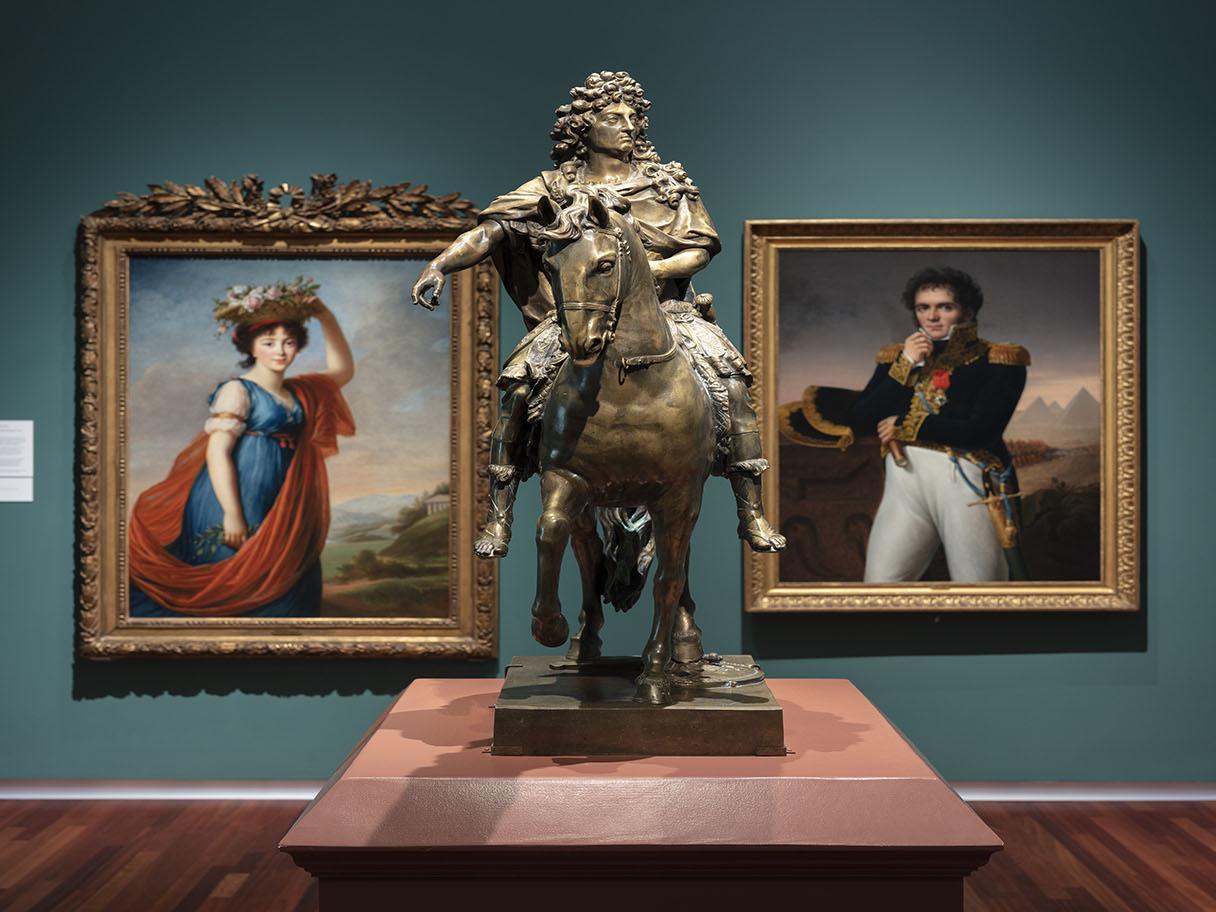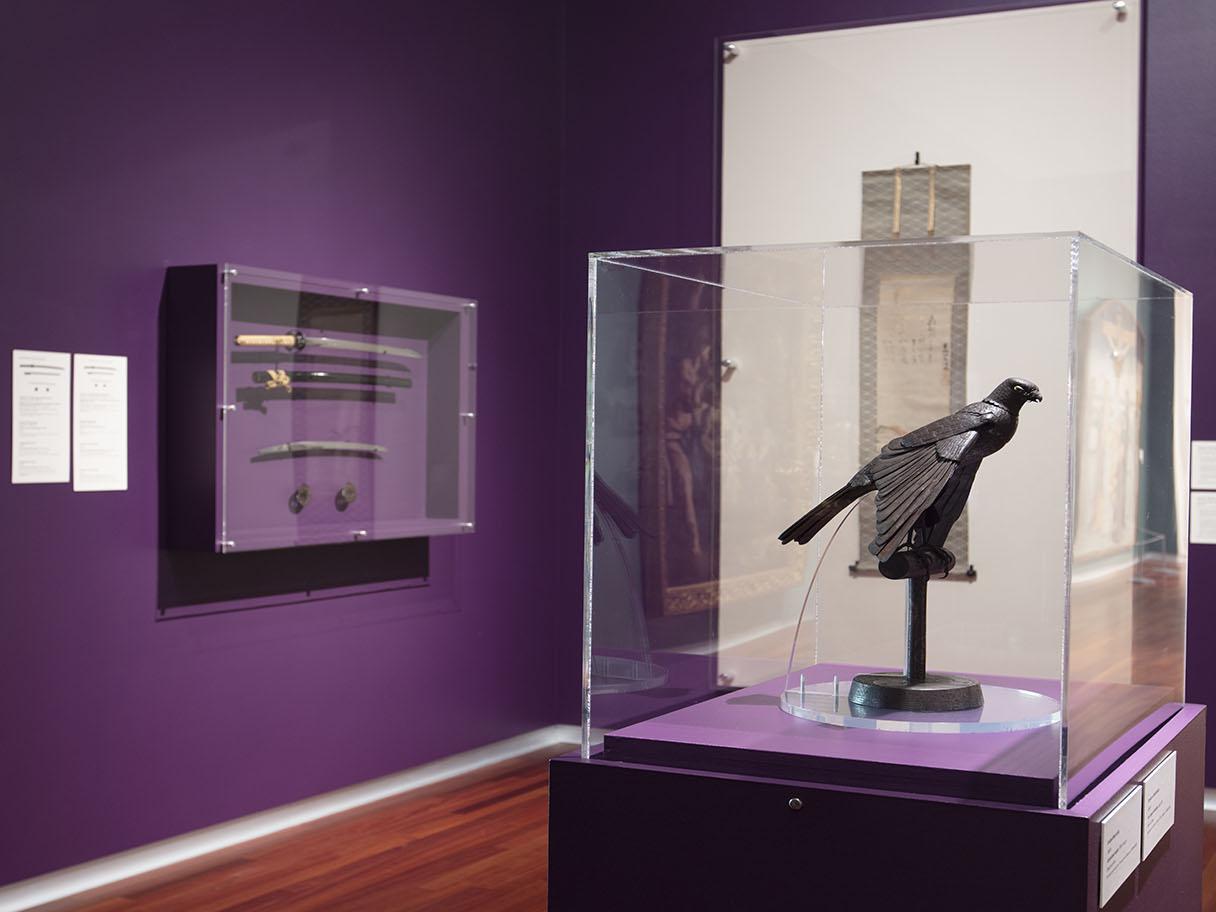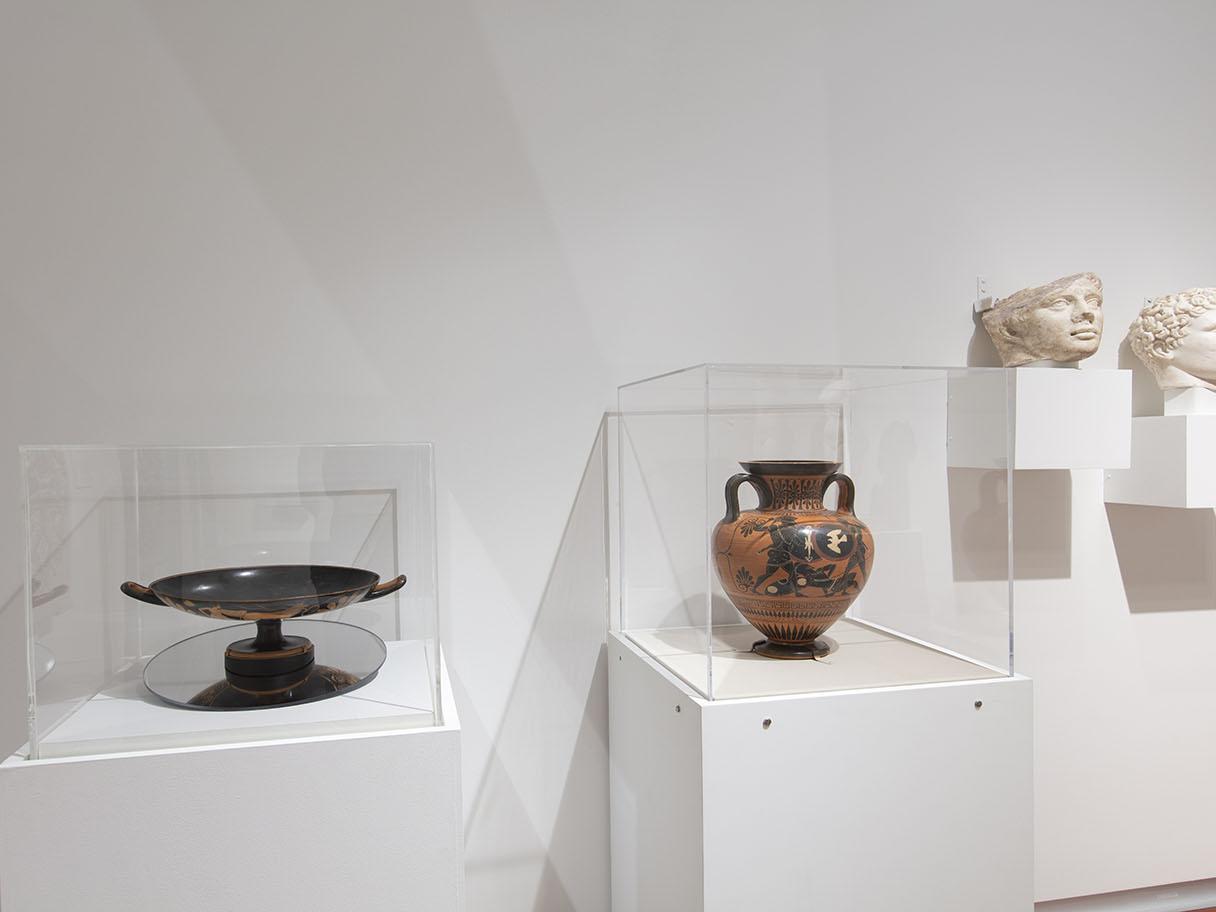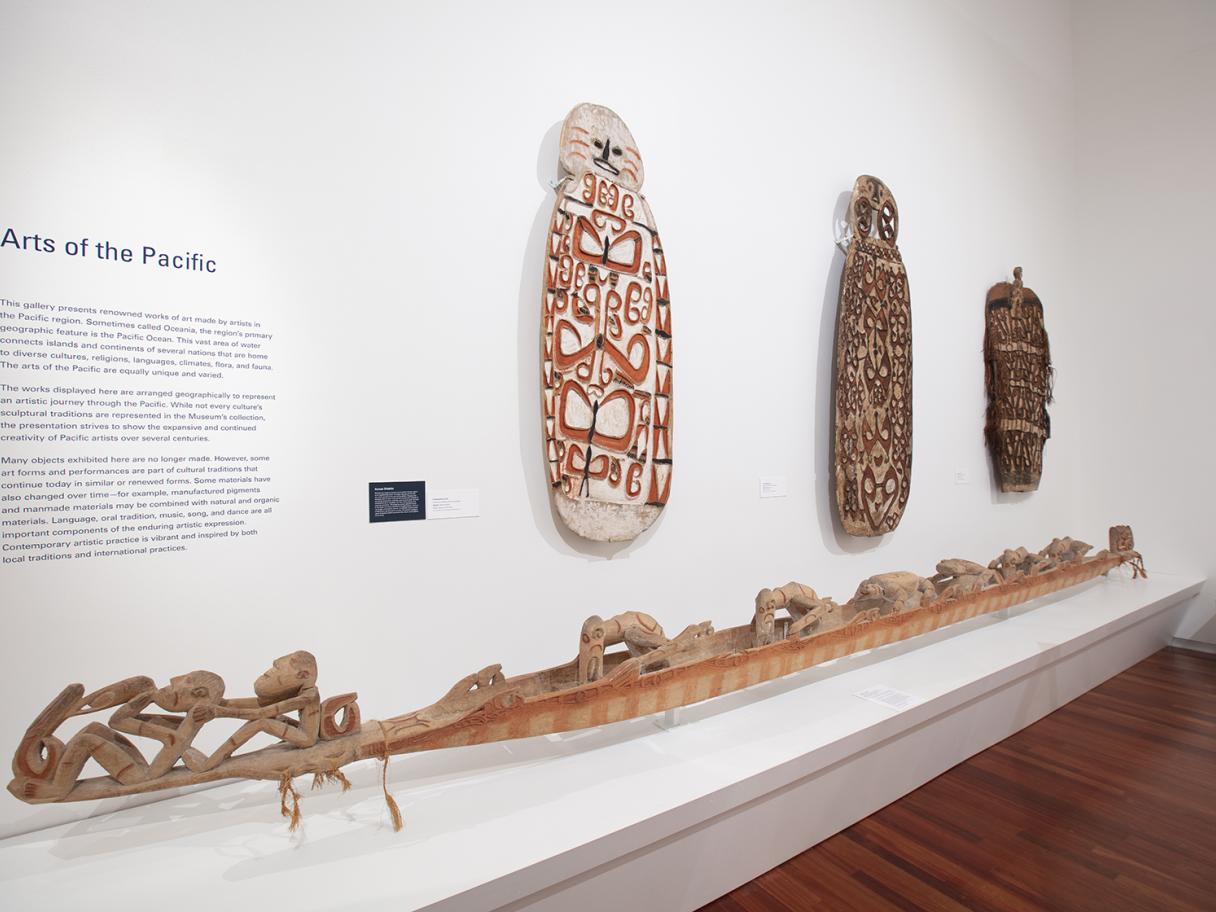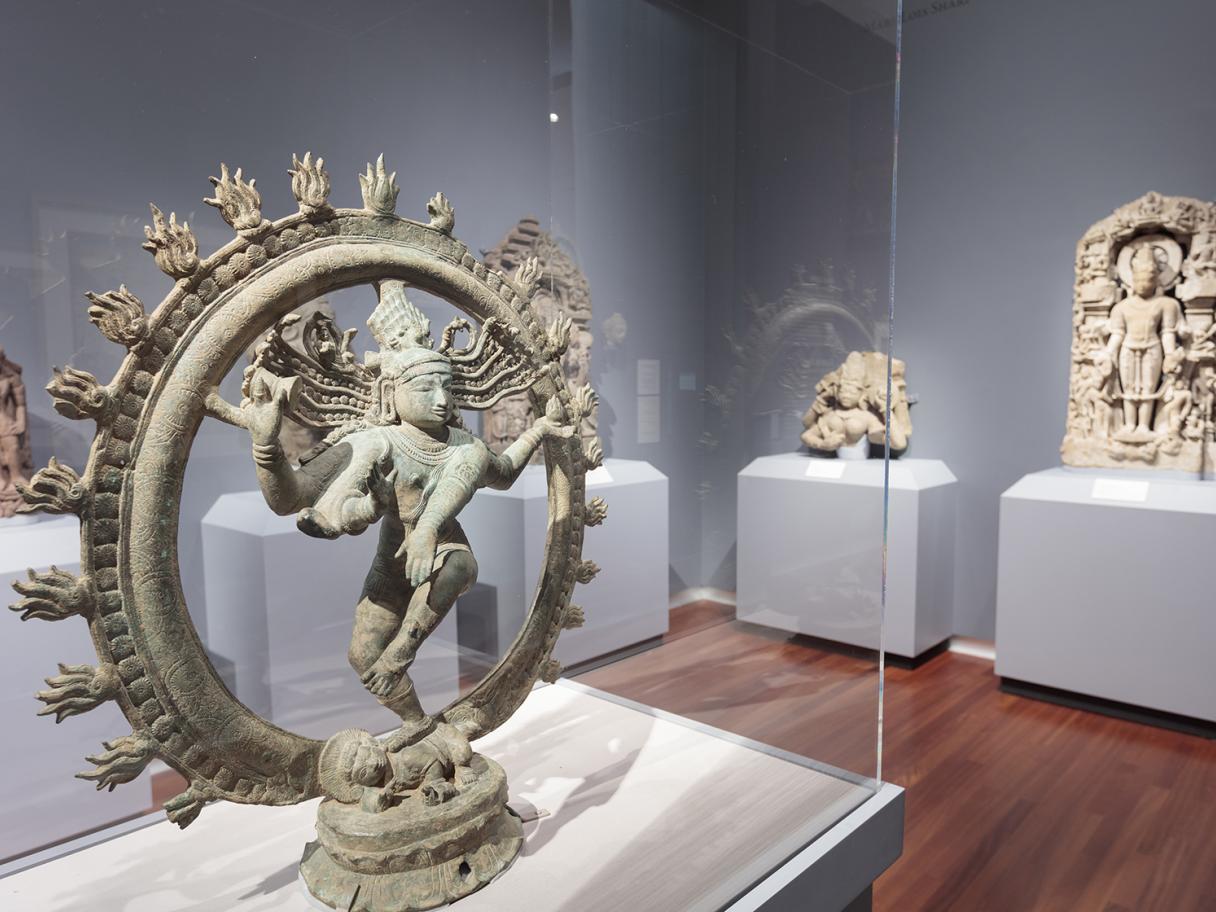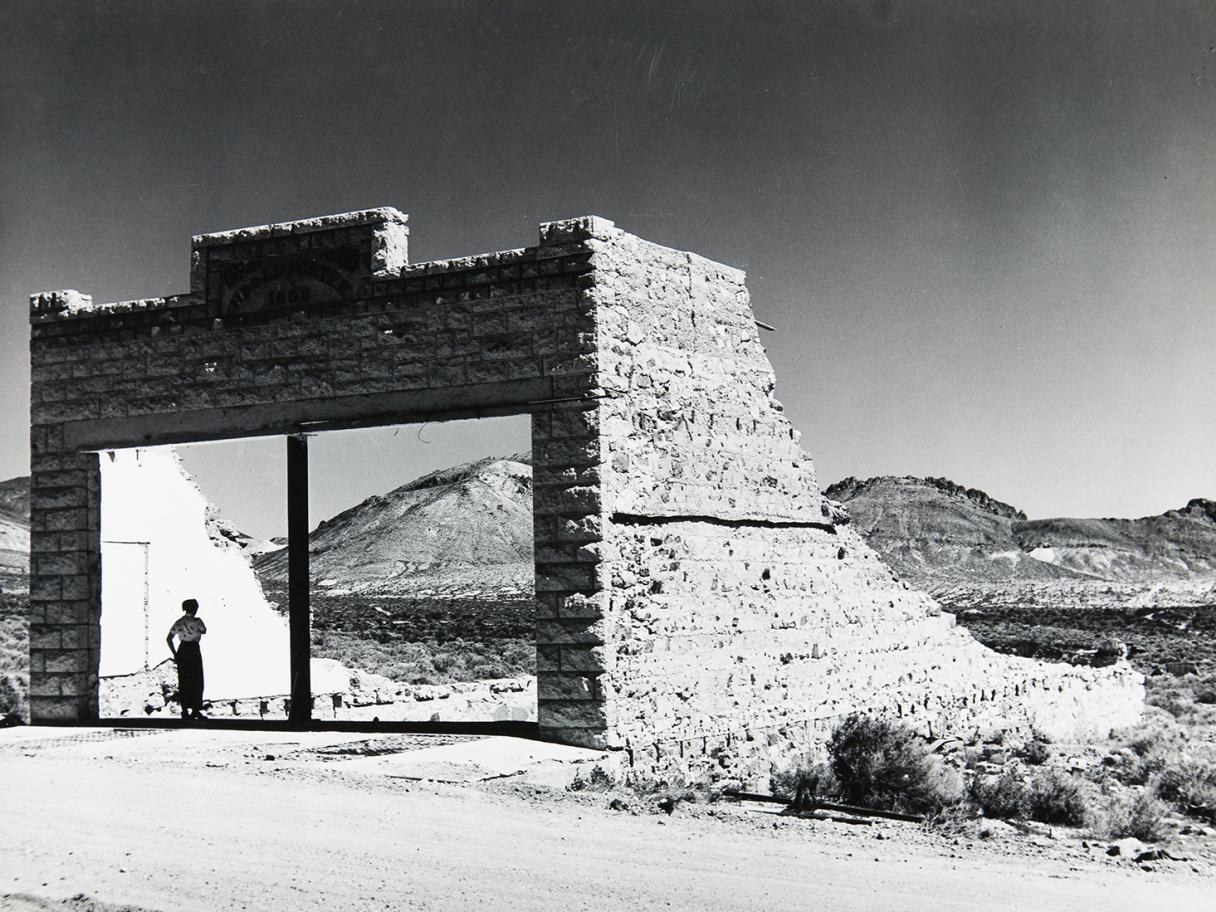Gateway to Himalayan Art introduces the main concepts and meanings of Himalayan Buddhist devotional art, a practice developed and evolved in Tibet, India, Nepal, and Bhutan, as well as interrelated Mongolian and Chinese traditions. The exhibition features scroll paintings (thangkas), sculptures, and ritual objects dating from the 17th to the 21st century.
Stone on Boundary features 5,000 copper foils that are molded from river rocks in Osaka, Japan and Salt Lake City, Utah. The installation reflects Utah’s vast and varied landscape – from river stones in deep canyons to the towering peaks of the Wasatch and Oquirrh Mountains and the dynamic red rock formations in southern parts of the state. This work was designed in Onishi’s studio in Osaka, where Japan refined copper exports that supplied the world for over 200 years. Bringing these foils to Salt Lake City, home to the largest open-pit copper mine operating today, connects the two places through a shared material resource that has a profound effect on the world.

